
Keywords: gene drive ecology
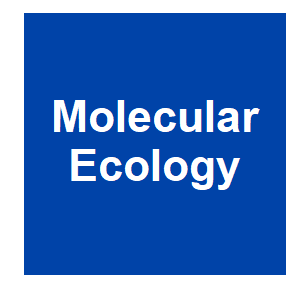
|
Suppression gene drive in continuous space can result in unstable persistence of both drive and wild-type allelesJ. Champer, I. K. Kim, S. E. Champer, A. G. Clark and P. W. Messer, Mol Ecol, 2021.
Using spatially explicit simulations, we show that the release of a suppression drive can result in what we term "chasing" dynamics, in which wild-type individuals recolonize areas where the drive locally eliminated the population. Despite the drive subsequently reconquering ... Keywords: animals, conservation, gene drive ecology, gene drive news, gene drive synthetic, mammals, squirrel |

|
MGDrivE 2: A simulation framework for gene drive systems incorporating seasonality and epidemiological dynamicsS. L. Wu, J. B. Bennett, H. M. Sanchez C, A. J. Dolgert, T. M. Leon and J. M. Marshall, bioRxiv, 2020.10.16.343376. 2020.
We present MGDrivE 2 (Mosquito Gene Drive Explorer 2): an extension of and development from the MGDrivE 1 simulation framework that investigates the population dynamics of a variety of gene drive architectures and their spread through spatially-explicit mosquito populations. Keywords: animals, conservation, gene drive ecology, gene drive news, gene drive synthetic, mammals, squirrel |
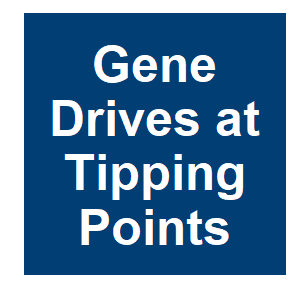
|
Vulnerability Analysis of Ecological SystemsCarina R. Lalyer, Arnim von gleich, Bernd Giese, Gene Drives at Tipping Points, 2020.
Vulnerability analysis can be seen as the counterpart to technology characterization. Technology characterisation scrutinises the intervening technology. Vulnerability analyses potentially affected systems. That may be socio-ecological, socio-technical, socio-economic or other ... Keywords: animals, conservation, gene drive ecology, gene drive news, gene drive synthetic, mammals, squirrel |

|
Experimental manipulation of selfish genetic elements links genes to microbial community functionS. D. Quistad, G. Doulcier and P. B. Rainey, Philosophical Transactions of the Royal Society B-Biological Sciences, 375:12. 2020.
Microbial communities underpin the Earth's biological and geochemical processes, but their complexity hampers understanding. Motivated by the challenge of diversity and the need to forge ways of capturing dynamical behaviour connecting genes to function, biologically independent ... Keywords: animals, conservation, gene drive ecology, gene drive news, gene drive synthetic, mammals, squirrel |
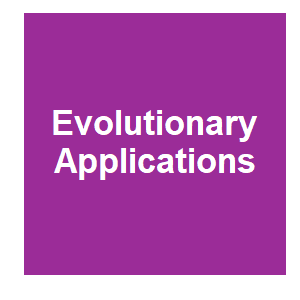
|
Evaluating the Probability of CRISPR-based Gene Drive Contaminating Another SpeciesV. Courtier-Orgogozo, A. Danchin, P.-H. Gouyon and C. Boëte, Evolutionary Applications, Early Online. 2020.
he probability D that a given CRISPR-based gene drive element contaminates another, non-target species can be estimated by the following Drive Risk Assessment Quantitative Estimate (DRAQUE) Equation: D = (hyb + transf).express.cut.flank.immune.nonextinct with ... Keywords: animals, conservation, gene drive ecology, gene drive news, gene drive synthetic, mammals, squirrel |
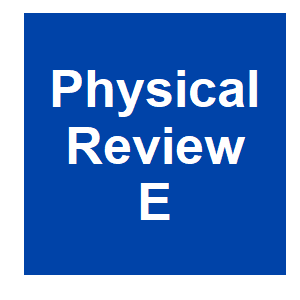
|
Modeling the impacts of a simple meiotic gene drive on small, homeostatic populationsK. R. Pilkiewicz and M. L. Mayo, Physical Review E, 101:11. 2020.
Gene drives offer unprecedented control over the fate of natural ecosystems by leveraging non-Mendelian inheritance mechanisms to proliferate synthetic genes across wild populations. However, these benefits are offset by a need to avoid the potentially disastrous consequences of ... Keywords: animals, conservation, gene drive ecology, gene drive news, gene drive synthetic, mammals, squirrel |

|
Vector genetics, insecticide resistance and gene drives: an agent-based modeling approach to evaluate malaria transmission and eliminationP. Selvaraj, E. A. Wenger, D. Bridenbecker, N. Windbichler, J. R. Russell, J. Gerardin, C. A. Bever and M. Nikolov, bioRxiv, 2020.01.27.920421. 2020.
Vector control has been a key component in the fight against malaria for decades, and chemical insecticides are critical to the success of vector control programs worldwide. However, increasing resistance to insecticides threatens to undermine these efforts. Understanding the ... Keywords: animals, conservation, gene drive ecology, gene drive news, gene drive synthetic, mammals, squirrel |
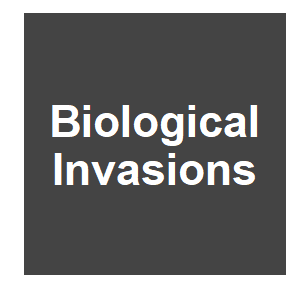
|
Scenario analysis on the use of rodenticides and sex-biasing gene drives for the removal of invasive house mice on islandsM. E. Serr, R. X. Valdez, K. S. Barnhill-Dilling, J. Godwin, T. Kuiken and M. Booker, Biological Invasions, 2020.
Since the 1960s conservation efforts have focused on recovering island biodiversity by eradicating invasive rodents. These eradication campaigns have led to considerable conservation gains, particularly for nesting seabirds. However, eradications are complex and lengthy endeavors ... Keywords: animals, conservation, gene drive ecology, gene drive news, gene drive synthetic, mammals, squirrel |

|
Scientists behind Dolly the sheep want to edit squirrel DNA to get rid of greys and protect reds UKBedoya, D., Inforsurhoy, 2020.
The scientists who cloned Dolly the sheep are now targeting grey squirrels in a bid to rid Britain of them altogether. Keywords: animals, conservation, gene drive ecology, gene drive news, gene drive synthetic, mammals, squirrel |

|
First they cloned Dolly the sheep. Now they’re targeting grey squirrelsLeake, J., The Times, 2020.
For 150 years they have wreaked havoc on Britain’s woods and wildlife, but the destructive reign of the grey squirrel could soon be over — ended by DNA editing to ensure that all future females are born infertile. Researchers at the Roslin Institute, the genetics laboratory ... Keywords: animals, conservation, gene drive ecology, gene drive news, gene drive synthetic, mammals, squirrel |
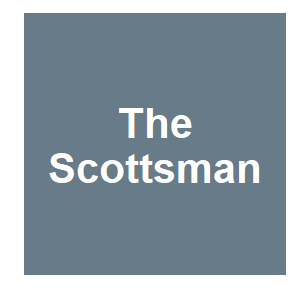
|
Dolly the sheep scientists hope DNA editing can wipe out grey squirrelsMcLaughlin, M., The Scotsman, 2020.
They have been poisoned, shot at, and stumbled into traps laid by those who regard them as a ruinous blight on the country’s woodland and wildlife. But now, the grey squirrel is facing arguably its biggest threat yet, with plans to harness the cutting edge of genetic science ... Keywords: animals, conservation, gene drive ecology, gene drive news, gene drive synthetic, mammals, squirrel |

|
Fitness consequences of a non-recombining sex-ratio drive chromosome can explain its prevalence in the wildDyer, K. A. and D. W. Hall, Proceedings of the Royal Society B: Biological Sciences, 286:20192529. 2019.
Understanding the pleiotropic consequences of gene drive systems on host fitness is essential to predict their spread through a host population. Here, we study sex-ratio (SR) X-chromosome drive in the fly Drosophila recens, where SR causes the death of Y-bearing sperm in male ... Keywords: animals, conservation, gene drive ecology, gene drive news, gene drive synthetic, mammals, squirrel |
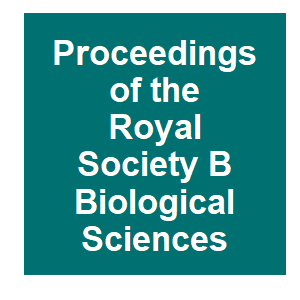
|
Gene drive: progress and prospectsWedell, N., T. A. R. Price and A. K. Lindholm, Proceedings of the Royal Society B: Biological Sciences, 286:20192709. 2019.
Gene drive is a naturally occurring phenomenon in which selfish genetic elements manipulate gametogenesis and reproduction to increase their own transmission to the next generation. Currently, there is great excitement about the potential of harnessing such systems to control ... Keywords: animals, conservation, gene drive ecology, gene drive news, gene drive synthetic, mammals, squirrel |

|
Ancient gene drives: an evolutionary paradoxPrice, T. A. R., R. Verspoor and N. Wedell, Proceedings of the Royal Society B: Biological Sciences, 286:20192267. 2019.
Selfish genetic elements such as selfish chromosomes increase their transmission rate relative to the rest of the genome and can generate substantial cost to the organisms that carry them. Such segregation distorters are predicted to either reach fixation (potentially causing ... Keywords: animals, conservation, gene drive ecology, gene drive news, gene drive synthetic, mammals, squirrel |
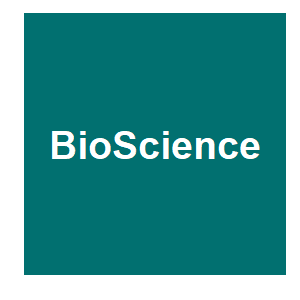
|
Genetically engineering wild mice to combat Lyme disease: An ecological perspectiveSnow, A. A., BioScience, 69:746-756. 2019.
Genetic engineering of wild populations has been proposed for reducing human diseases by altering pathogens’ hosts. For example, CRISPR- based genome editing may be used to create white-footed mice (Peromyscus leucopus) that are resistant to the Lyme disease ... Keywords: animals, conservation, gene drive ecology, gene drive news, gene drive synthetic, mammals, squirrel |
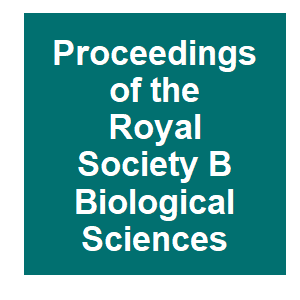
|
An assessment of the immune costs associated with meiotic drive elements in DrosophilaLea, J. K. and R. L. Unckless, Proceedings of the Royal Society B: Biological Sciences, 286:20191534. 2019.
Most organisms are constantly adapting to pathogens and parasites that exploit their host for their own benefit. Less studied, but perhaps more ubiquitous, are intragenomic parasites or selfish genetic elements. These include transposable elements, selfish B chromosomes and ... Keywords: animals, conservation, gene drive ecology, gene drive news, gene drive synthetic, mammals, squirrel |
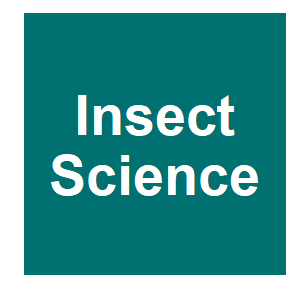
|
Invasive insects: Management methods exploredMcLaughlin, G. M. and P. K. Dearden, Journal of Insect Science, 19:1-9. 2019.
Invasive insect species can act as a plague across the globe, capable of vast expansion and rapid, proliferate reproduction. The spread of pathogens of serious diseases such as malaria and Zika virus and damages to agricultural crops number some of the afflictions invasive ... Keywords: animals, conservation, gene drive ecology, gene drive news, gene drive synthetic, mammals, squirrel |
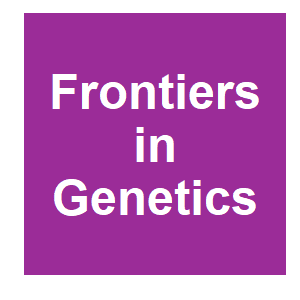
|
Winning the tug-of-war between effector gene design and pathogen evolution in vector population replacement strategiesMarshall, J. M., R. R. Raban, N. P. Kandul, J. R. Edula, T. M. León and O. S. Akbari, Frontiers in Genetics, 10:1072. 2019.
While efforts to control malaria with available tools have stagnated, and arbovirus outbreaks persist around the globe, the advent of clustered regularly interspaced short palindromic repeat (CRISPR)-based gene editing has provided exciting new opportunities for genetics-based ... Keywords: animals, conservation, gene drive ecology, gene drive news, gene drive synthetic, mammals, squirrel |
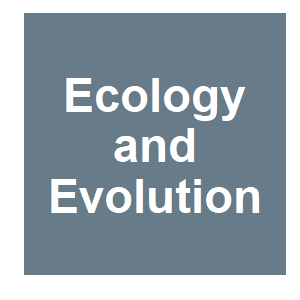
|
The impact of local population genetic background on the spread of the selfish element Medea-1 in red flour beetlesS. A. Cash, M. A. Robert, M. D. Lorenzen and F. Gould, Ecology and Evolution, 12:1-12. 2019.
Selfish genetic elements have been found in the genomes of many species, yet our understanding of their evolutionary dynamics is only partially understood. A number of distinct selfish Medea elements are naturally present in many populations of the red flour beetle (Tribolium ... Keywords: animals, conservation, gene drive ecology, gene drive news, gene drive synthetic, mammals, squirrel |
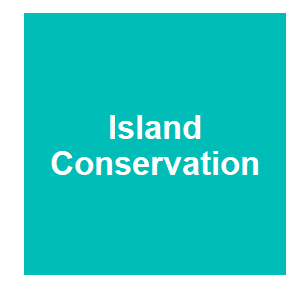
|
Gene Drive and Thinking AnimalsIsland Conservation, , 2019.
Royden Saah, Island Conservation's GBIRd program manager, recently spoke at the Thinking Animals Summit alongside Leilani Münter, a former professional race car driver and environmental activist. The Genetic Biocontrol of Invasive Rodents partnership (GBIRd) is designed for ... Keywords: animals, conservation, gene drive ecology, gene drive news, gene drive synthetic, mammals, squirrel |

|
Threshold-Dependent Gene Drives in Wild Populations – A PodcastG. A. Backus and J. A. Delborne, BioScience Talks, 2019.
By altering the heritability of certain traits, gene drive technologies have the potential to spread desired genes through wild populations. In practice, this could lead to mosquito populations that, for example, bear traits making them resistant to the spread of malaria. Despite ... Keywords: animals, conservation, gene drive ecology, gene drive news, gene drive synthetic, mammals, squirrel |

|
Genetically engineered mosquitoes out of controlGM Watch, GM Watch, 2019.
According to a new scientific publication, genetically engineered mosquitoes produced by the biotech company Oxitec (Intrexon) have escaped human control after trials in Brazil. They are now spreading in the environment. The yellow fever mosquitoes (Aedes aegypti) are genetically ... Keywords: animals, conservation, gene drive ecology, gene drive news, gene drive synthetic, mammals, squirrel |

|
A 2017 horizon scan of emerging issues for global conservation and biological diversitySutherland, WJB, P.; Broad, S.; Clout, M.; Connor, B.; Cote, I. M.; Dicks, L. V.; Doran, H.; Entwistle, A. C.; Fleishman, E.; Fox, M.; Gaston, K. J.; Gibbons, D. W.; Jiang, Z.; Keim, B.; Lickorish, F. A.; Markillie, P.; Monk, K. A.; Pearce-Higgins, J. W.; Peck, L. S.; Pretty, J.; Spalding, M. D.; Tonneijck, F. H.; Wintle, B. C.; Ockendon, N., Trends in Ecology & Evolution, 32:31-40. 2019.
We present the results of our eighth annual horizon scan of emerging issues likely to affect global biological diversity, the environment, and conservation efforts in the future. The potential effects of these novel issues might not yet be fully recognized or understood by the ... Keywords: animals, conservation, gene drive ecology, gene drive news, gene drive synthetic, mammals, squirrel |
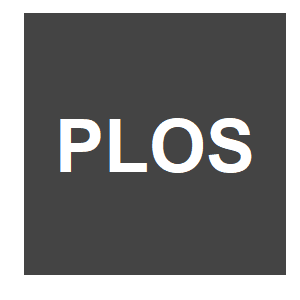
|
A natural gene drive system influences bovine tuberculosis susceptibility in African buffalo: Possible implications for disease managementP. van Hooft, W. M. Getz, B. J. Greyling and A. D. S. Bastos, PLoS One, 14:e0221168. 2019.
Bovine tuberculosis (BTB) is endemic to the African buffalo (Syncerus caffer) of Hluhluwe-iMfolozi Park (HiP) and Kruger National Park, South Africa. In HiP, the disease has been actively managed since 1999 through a test-and-cull procedure targeting BTB-positive buffalo. Prior ... Keywords: animals, conservation, gene drive ecology, gene drive news, gene drive synthetic, mammals, squirrel |
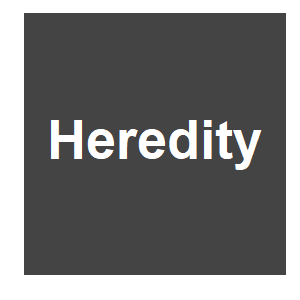
|
Interpopulation spread of a parasitic B chromosome is unlikely through males in the grasshopper Eyprepocnemis ploransM. I. Manrique-Poyato, J. Cabrero, M. D. López-León, F. Perfectti, R. Gómez and J. P. M. Camacho, Heredity, 124:197-206. 2019.
The near-neutral model of B chromosome evolution predicts that population invasion is quite fast. To test this prediction, in 1994, we introduced males of the grasshopper Eyprepocnemis plorans from a B-carrying population into a B-lacking population and monitored the evolution of ... Keywords: animals, conservation, gene drive ecology, gene drive news, gene drive synthetic, mammals, squirrel |

|
Gene-drive-mediated extinction is thwarted by population structure and evolution of sib matingJ. J. Bull, C. H. Remien and S. M. Krone, Evolution Medicine and Public Health, 2019:66-81. 2019.
Genetic engineering combined with CRISPR technology has developed to the point that gene drives can, in theory, be engineered to cause extinction in countless species. Success of extinction programs now rests on the possibility of resistance evolution, which is largely unknown. ... Keywords: animals, conservation, gene drive ecology, gene drive news, gene drive synthetic, mammals, squirrel |

|
Male competition and the evolution of mating and ire-history traits in experimental populations of Aedes aegyptiQureshi, AA, A.; Hollis, B.; Ponlawat, A.; Cator, L. J., Proceedings of the Royal Society B-Biological Sciences, 286:20190591. 2019.
Aedes aegypti is an important disease vector and a major target of reproductive control efforts. We manipulated the opportunity for sexual selection in populations of Ae. aegypti by controlling the number of males competing for a single female. Populations exposed to higher ... Keywords: animals, conservation, gene drive ecology, gene drive news, gene drive synthetic, mammals, squirrel |
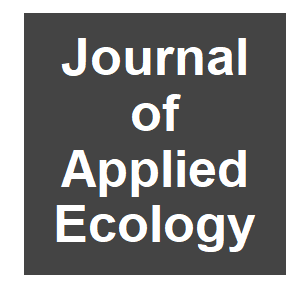
|
Predicting the spatial dynamics of Wolbachia infections in Aedes aegypti arbovirus vector populations in heterogeneous landscapesHancock, PAR, S. A.; Koenraadt, C. J. M.; Scott, T. W.; Hoffmann, A. A.; Godfray, H. C. J., Journal of Applied Ecology, 56:1674-1686. 2019.
A promising strategy for reducing the transmission of dengue and other arboviral human diseases by Aedes aegypti mosquito vector populations involves field introductions of the endosymbiotic bacteria Wolbachia. Wolbachia infections inhibit viral transmission by the mosquito, and ... Keywords: animals, conservation, gene drive ecology, gene drive news, gene drive synthetic, mammals, squirrel |
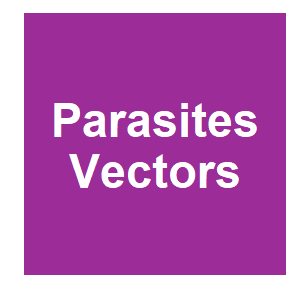
|
Population genetics of Anopheles funestus, the African malaria vector, KenyaOgola, EOO, J. O.; Mwangangi, J. M.; Masiga, D. K.; Tchouassi, D. P., Parasites & Vectors, 12:15. 2019.
Anopheles funestus is among the major malaria vectors in Kenya and sub-Saharan Africa and has been recently implicated in persistent malaria transmission. However, its ecology and genetic diversity remain poorly understood in Kenya.MethodsUsing 16 microsatellite loci, we examined ... Keywords: animals, conservation, gene drive ecology, gene drive news, gene drive synthetic, mammals, squirrel |
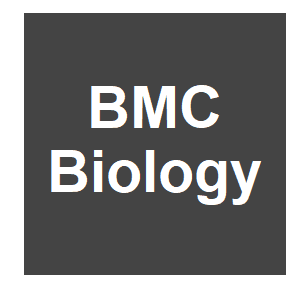
|
Modelling the potential of genetic control of malaria mosquitoes at national scaleNorth, ARB, Austin; Godfray, H. Charles J., BMC Biology, 17:26. 2019.
The persistence of malaria in large parts of sub-Saharan Africa has motivated the development of novel tools to complement existing control programmes, including gene-drive technologies to modify mosquito vector populations. Here, we use a stochastic simulation model to explore ... Keywords: animals, conservation, gene drive ecology, gene drive news, gene drive synthetic, mammals, squirrel |

|
Stakeholder attitudes towards the use of recombinant technology to manage the impact of an invasive species: Sea Lamprey in the North American Great LakesThresher, REJ, M.; Drake, D. A. R., Biological Invasions, 21:575-586. 2019.
Several factors, including: (1) on-going difficulties of cost-effectively managing invasive species; (2) recent successes in using recombinant genetics to suppress mosquito populations; and, (3) developments in gene-drive technology, have re-invigorated interest in using genetic ... Keywords: animals, conservation, gene drive ecology, gene drive news, gene drive synthetic, mammals, squirrel |
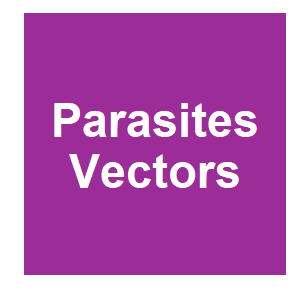
|
Large-cage assessment of a transgenic sex-ratio distortion strain on populations of an African malaria vectorFacchinelli, LN, A.; Collins, C.; Menichelli, M.; Persampieri, T.; Bucci, A.; Spaccapelo, R.; Crisanti, A.; Benedict, M., Parasites & Vectors, 12:70. 2019.
Novel transgenic mosquito control methods require progressively more realistic evaluation. The goal of this study was to determine the effect of a transgene that causes a male-bias sex ratio on Anopheles gambiae target populations in large insectary cages. Life history ... Keywords: animals, conservation, gene drive ecology, gene drive news, gene drive synthetic, mammals, squirrel |
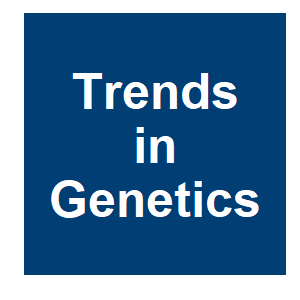
|
Making a murderer: The evolutionary framing of hybrid gamete-killersSweigart, ALB, Yaniv; Fishman, Lila, Trends in Genetics, 35:245-252. 2019.
Recent molecular investigations of hybrid incompatibilities have revealed fascinating patterns of genetic interactions that have been interpreted as the remnants of a history of selfish evolution. Instead of framing hybrid incompatibilities in light of genetic conflict, we ... Keywords: animals, conservation, gene drive ecology, gene drive news, gene drive synthetic, mammals, squirrel |
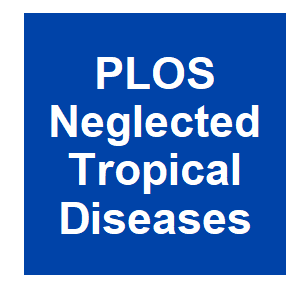
|
Alternative strategies for mosquito-borne arbovirus controlAchee, NLG, J. P.; Vatandoost, H.; Seixas, G.; Pinto, J.; Ching-Ng, L.; Martins, A. J.; Juntarajumnong, W.; Corbel, V.; Gouagna, C.; David, J. P.; Logan, J. G.; Orsborne, J.; Marois, E.; Devine, G. J.; Vontas, J., PLOS Neglected Tropical Diseases, 13:e0006822. 2019.
Mosquito-borne virusessuch as Zika, chikungunya, dengue fever, and yellow fever, among othersare of global importance. Although vaccine development for prevention of mosquito-borne arbovirus infections has been a focus, mitigation strategies continue to rely on vector control. ... Keywords: animals, conservation, gene drive ecology, gene drive news, gene drive synthetic, mammals, squirrel |
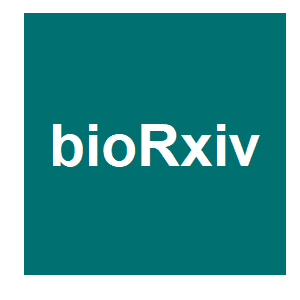
|
Evaluating the Probability of CRISPR-based Gene Drive Contaminating Another SpeciesCourtier-Orgogozo, VD, Antoine; Gouyon, Pierre-Henri; Boëte, Christophe, bioRxiv, 776609:27. 2019.
The probability D that a given CRISPR-based gene drive element contaminates another, non-target species can be estimated by the following Drive Risk Assessment Quantitative Estimate (DRAQUE) Equation: D = (hyb+transf).express.cut.flank.immune.nonextinct withhyb = probability of ... Keywords: animals, conservation, gene drive ecology, gene drive news, gene drive synthetic, mammals, squirrel |

|
Forcing the Farmetc group, etc group, 2018.
This report is being issued as an alert to governments, civil society organisations and grassroots movements. It points to how gene drives, while promoted as a tool for medicine and conservation, will find their real use in food and farming by agribusiness. It calls for a pause ... Keywords: animals, conservation, gene drive ecology, gene drive news, gene drive synthetic, mammals, squirrel |

|
Editing nature: Local roots of global governanceKofler, N.C., James P.; Kuzma, Jennifer; Marris, Emma; Esvelt, Kevin; Nelson, Michael Paul; Newhouse, Andrew; Rothschild, Lynn J.; Vigliotti, Vivian S.; Semenov, Misha; Jacobsen, Rowan; Dahlman, James E.; Prince, Shannon; Caccone, Adalgisa; Brown, Timothy, Science, 2018.
Keywords: animals, conservation, gene drive ecology, gene drive news, gene drive synthetic, mammals, squirrel |

|
Population seasonality and release timing significantly affect the probability of establishment for small releases of gene drive mosquitoesNikolov, MO, A. L.; Beaghton, A. K.; Beaghton, P. J.; Wenger, E. A.; Burt, A.; Welkhoff, P. A., American Journal of Tropical Medicine and Hygiene, 99:367-367. 2018.
Highly efficient CRISPR/Cas9 gene-drive systems have recently been developed, targeting reproductive-capacity and malaria-competency loci of malaria transmitting vector species, such as An. gambiae. The resulting drive systems aim to either suppress the local wild-type population ... Keywords: animals, conservation, gene drive ecology, gene drive news, gene drive synthetic, mammals, squirrel |
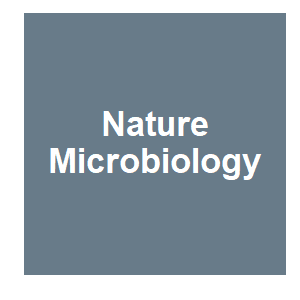
|
Engineered integrative and conjugative elements for efficient and inducible DNA transfer to undomesticated bacteriaBrophy, JANT, Alexander J.; Adams, Bryn L.; Renberg, Rebecca L.; Stratis-Cullum, Dimitra N.; Grossman, Alan D.; Voigt, Christopher A., Nature Microbiology, 3:1043-1053. 2018.
Engineering microorganisms to promote human or plant health will require manipulation of robust bacteria that are capable of surviving in harsh, competitive environments. Genetic engineering of undomesticated bacteria can be limited by an inability to transfer DNA into the cell. ... Keywords: animals, conservation, gene drive ecology, gene drive news, gene drive synthetic, mammals, squirrel |
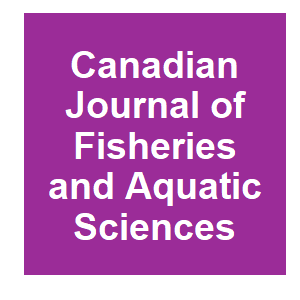
|
Evaluating active genetic options for the control of Sea Lampreys (Petromyzon marinus) in the Laurentian Great LakesThresher, REJ, Michael; Drake, D. Andrew, Canadian Journal of Fisheries and Aquatic Sciences, 76:1186-1202. 2018.
For more than two decades the Great Lakes Fishery Commission has sought tactics to complement, and potentially replace, the use of barriers and lampricides to control Sea Lamprey in the Great Lakes, but thus far without success. This paper examines the potential of modern genetic ... Keywords: animals, conservation, gene drive ecology, gene drive news, gene drive synthetic, mammals, squirrel |
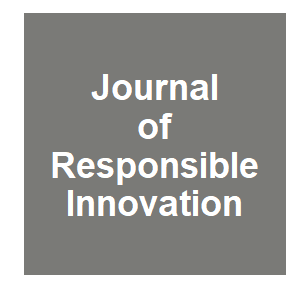
|
Identifying and detecting potentially adverse ecological outcomes associated with the release of gene-drive modified organismsHayes, KRH, G. R.; Dana, G. V.; Foster, S. D.; Ford, J. H.; Thresher, R.; Ickowicz, A.; Peel, D.; Tizard, M.; De Barro, P.; Strive, T.; Dambacher, J. M., Journal of Responsible Innovation, 5:S139-S158. 2018.
Synthetic gene drives could provide new solutions to a range of old problems such as controlling vector-borne diseases, agricultural pests and invasive species. In this paper, we outline methods to identify hazards and detect potentially adverse ecological outcomes at the ... Keywords: animals, conservation, gene drive ecology, gene drive news, gene drive synthetic, mammals, squirrel |
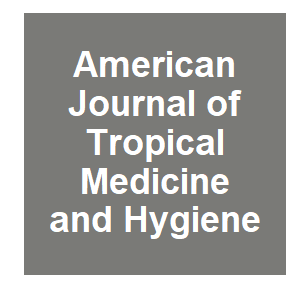
|
Simulating the effects of clumped egg laying on mosquito population dynamics in relation to gene-drive interventionsMorris, ALF, N.; Ghani, A., American Journal of Tropical Medicine and Hygiene, 99:279-280. 2018.
Gene-drive based vector control methods are a rapidly developing tool in the fight against malaria. They utilise highly targeted insertions of genes to express specific traits, such as biases in offspring sex ratio or inhibited vector competence, which are preferentially ... Keywords: animals, conservation, gene drive ecology, gene drive news, gene drive synthetic, mammals, squirrel |
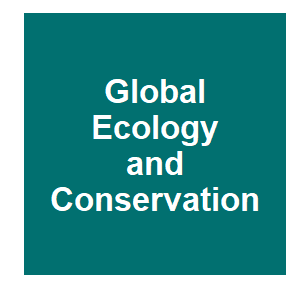
|
Identifying knowledge gaps for gene drive research to control invasive animal species: The next CRISPR stepMoro, DB, Margaret; Kennedy, Malcolm; Campbell, Susan; Tizard, Mark, Global Ecology and Conservation, 13:e00363. 2018.
Invasive animals have been linked to the extinctions of native wildlife, and to significant agricultural financial losses or impacts. Current approaches to control invasive species require ongoing resources and management over large geographic scales, and often result in the ... Keywords: animals, conservation, gene drive ecology, gene drive news, gene drive synthetic, mammals, squirrel |

|
To reduce the global burden of human schistosomiasis, use ‘old fashioned’ snail controlSokolow, SHW, Chelsea L.; Jones, Isabel J.; Lafferty, Kevin D.; Kuris, Armand; Hsieh, Michael H.; De Leo, Giulio A., Trends in Parasitology, 34:23-40. 2018.
Control strategies to reduce human schistosomiasis have evolved from ‘snail picking’ campaigns, a century ago, to modern wide-scale human treatment campaigns, or preventive chemotherapy. Unfortunately, despite the rise in preventive chemotherapy campaigns, just as many people ... Keywords: animals, conservation, gene drive ecology, gene drive news, gene drive synthetic, mammals, squirrel |
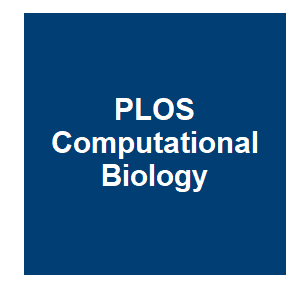
|
Population dynamics of engineered underdominance and killer-rescue gene drives in the control of disease vectorsEdgington, MPA, Luke S., PLOS Computational Biology, 14:e1006059. 2018.
Vector-borne diseases represent a severe burden to both human and animal health worldwide. The methods currently being used to control a range of these diseases do not appear sufficient to address the issues at hand. As such, alternate methods for the control of vector-borne ... Keywords: animals, conservation, gene drive ecology, gene drive news, gene drive synthetic, mammals, squirrel |

|
Carrying a selfish genetic element predicts increased migration propensity in free-living wild house miceRunge, J-NL, Anna K., Proceedings of the Royal Society B: Biological Sciences, 285:20181333. 2018.
Life is built on cooperation between genes, which makes it vulnerable to parasitism. Selfish genetic elements that exploit this cooperation can achieve large fitness gains by increasing their transmission relative to the rest of the genome. This leads to counter-adaptations that ... Keywords: animals, conservation, gene drive ecology, gene drive news, gene drive synthetic, mammals, squirrel |

|
Invasion and migration of spatially self-limiting gene drives: A comparative analysisDhole, S.; Vella, M. R; Lloyd, A. L.; Gould, F., Evolutionary Applications, 11:794-808. 2018.
Recent advances in research on gene drives have produced genetic constructs that could theoretically spread a desired gene (payload) into all populations of a species, with a single release in one place. This attribute has advantages, but also comes with risks and ethical ... Keywords: animals, conservation, gene drive ecology, gene drive news, gene drive synthetic, mammals, squirrel |

|
The use of driving endonuclease genes to suppress mosquito vectors of malaria in temporally variable environmentsLambert, BN, Ace; Burt, Austin; Godfray, H. Charles J., Malaria Journal, 17:154. 2018.
The use of gene drive systems to manipulate populations of malaria vectors is currently being investigated as a method of malaria control. One potential system uses driving endonuclease genes (DEGs) to spread genes that impose a genetic load. Previously, models have shown that ... Keywords: animals, conservation, gene drive ecology, gene drive news, gene drive synthetic, mammals, squirrel |

|
Editing nature: Local roots of global governanceKofler, NC, James P.; Kuzma, Jennifer; Marris, Emma; Esvelt, Kevin; Nelson, Michael Paul; Newhouse, Andrew; Rothschild, Lynn J.; Vigliotti, Vivian S.; Semenov, Misha; Jacobsen, Rowan; Dahlman, James E.; Prince, Shannon; Caccone, Adalgisa; Brown, Timothy; Schmitz, Oswald J., Science, 362:527. 2018.
The end of malaria. Restored island habitats. Resiliency for species threatened by climate change. Many envisioned environmental applications of newly developed gene-editing techniques such as CRISPR might provide profound benefits for ecosystems and society. But depending on the ... Keywords: animals, conservation, gene drive ecology, gene drive news, gene drive synthetic, mammals, squirrel |
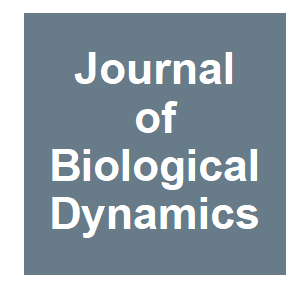
|
Modelling Allee effects in a transgenic mosquito population during range expansionWalker, MB, Julie C.; Brown, Vicki; Childs, Lauren M., Journal of Biological Dynamics, 13:2-22. 2018.
Mosquitoes are vectors for many diseases that cause significant mortality and morbidity. As mosquito populations expand their range, they may undergo mate-finding Allee effects such that their ability to successfully reproduce becomes difficult at low population density. With new ... Keywords: animals, conservation, gene drive ecology, gene drive news, gene drive synthetic, mammals, squirrel |
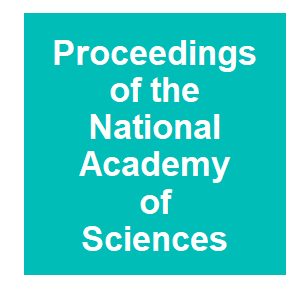
|
Impact of mosquito gene drive on malaria elimination in a computational model with explicit spatial and temporal dynamicsEckhoff, PAW, E. A.; Godfray, H. C. J.; Burt, A., Proceedings of the National Academy of Sciences of the United States of America, 114:e255-e264. 2017.
The renewed effort to eliminate malaria and permanently remove its tremendous burden highlights questions of what combination of tools would be sufficient in various settings and what new tools need to be developed. Gene drive mosquitoes constitute a promising set of tools, with ... Keywords: animals, conservation, gene drive ecology, gene drive news, gene drive synthetic, mammals, squirrel |

|
Sperm competition suppresses gene drive among experimentally evolving populations of house miceManser, AL, A. K.; Simmons, L. W.; Firman, R. C., Molecular Ecology, 26:5784-5792. 2017.
Drive genes are genetic elements that manipulate the 50% ratio of Mendelian inheritance in their own favour, allowing them to rapidly propagate through populations. The action of drive genes is often hidden, making detection and identification inherently difficult. Yet drive ... Keywords: animals, conservation, gene drive ecology, gene drive news, gene drive synthetic, mammals, squirrel |

|
Evolution of Resistance Against CRISPR/Cas9 Gene DriveUnckless, RLC, A. G.; Messer, P. W., Genetics, 205:827-841. 2017.
CRISPR/Cas9 gene drive (CGD) promises to be a highly adaptable approach for spreading genetically engineered alleles throughout a species, even if those alleles impair reproductive success. CGD has been shown to be effective in laboratory crosses of insects, yet it remains ... Keywords: animals, conservation, gene drive ecology, gene drive news, gene drive synthetic, mammals, squirrel |
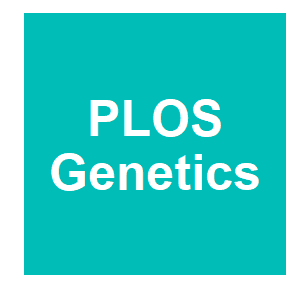
|
The creation and selection of mutations resistant to a gene drive over multiple generations in the malaria mosquitoHammond, AMK, Kyros; Bruttini, Marco; North, Ace; Galizi, Roberto; Karlsson, Xenia; Kranjc, Nace; Carpi, Francesco M.; D’Aurizio, Romina; Crisanti, Andrea; Nolan, Tony, PLOS Genetics, 13:e1007039. 2017.
Gene drives are selfish genetic elements that are able to bias their own inheritance among offspring. Starting from very low frequencies they can rapidly invade a population in just a few generations, even when imposing a fitness cost. Gene drives based on the precise DNA cutting ... Keywords: animals, conservation, gene drive ecology, gene drive news, gene drive synthetic, mammals, squirrel |
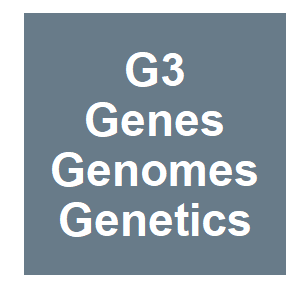
|
Comparative analysis of regions with distorted segregation in three diploid populations of potatoManrique-Carpintero, NCC, J. J.; Veilleux, R. E.; Buell, C. R.; Douches, D. S., G3-Genes Genomes Genetics, 6:2617-2628. 2016.
Genes associated with gametic and zygotic selection could underlie segregation distortion, observed as alterations of expected Mendelian genotypic frequencies in mapping populations. We studied highly dense genetic maps based on single nucleotide polymorphisms to elucidate the ... Keywords: animals, conservation, gene drive ecology, gene drive news, gene drive synthetic, mammals, squirrel |

|
Rapid evolution of a Y-chromosome heterochromatin protein underlies sex chromosome meiotic driveHelleu, QG, P. R.; Dubruille, R.; Ogereau, D.; Prud'homme, B.; Loppin, B.; Montchamp-Moreau, C., Proceedings of the National Academy of Sciences of the United States of America, 113:4110-4115. 2016.
Sex chromosome meiotic drive, the non-Mendelian transmission of sex chromosomes, is the expression of an intragenomic conflict that can have extreme evolutionary consequences. However, the molecular bases of such conflicts remain poorly understood. Here, we show that a young and ... Keywords: animals, conservation, gene drive ecology, gene drive news, gene drive synthetic, mammals, squirrel |
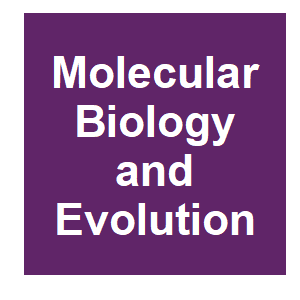
|
R2d2 drives selfish sweeps in the house mouseDidion, JPM, A. P.; Yadgary, L.; Bell, T. A.; McMullan, R. C.; de Solorzano, L. O.; Britton-Davidian, J.; Bult, C. J.; Campbell, K. J.; Castiglia, R.; Ching, Y. H.; Chunco, A. J.; Crowley, J. J.; Chesler, E. J.; Forster, D. W.; French, J. E.; Gabriel, S. I.; Gatti, D. M.; Garland, T.; Giagia-Athanasopoulou, E. B.; Gimenez, M. D.; Grize, S. A.; Gunduz, I.; Holmes, A.; Hauffe, H. C.; Herman, J. S.; Holt, J. M.; Hua, K. J.; Jolley, W. J.; Lindholm, A. K.; Lopez-Fuster, M. J.; Mitsainas, G.; Mathias, M. D.; McMillan, L.; Ramalhinho, M. D. M.; Rehermann, B.; Rosshart, S. P.; Searle, J. B.; Shiao, M. S.; Solano, E.; Svenson, K. L.; Thomas-Laemont, P.; Threadgill, D. W.; Ventura, J.; Weinstock, G. M.; Pomp, D.; Churchill, G. A.; de Villena, F. P. M., Molecular Biology and Evolution, 33:1381-1395. 2016.
A selective sweep is the result of strong positive selection driving newly occurring or standing genetic variants to fixation, and can dramatically alter the pattern and distribution of allelic diversity in a population. Population-level sequencing data have enabled discoveries ... Keywords: animals, conservation, gene drive ecology, gene drive news, gene drive synthetic, mammals, squirrel |
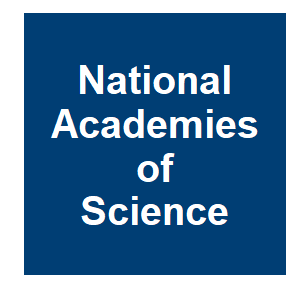
|
National Academies of Science, Engineering and Medicine’s Gene Drive Workshop: Science, Ethics, and Governance Considerations for Gene Drive Research – October 28, 2015National Academy of Sciences Engineering Medicine, National Academy of Sciences, 2015.Keywords: animals, conservation, gene drive ecology, gene drive news, gene drive synthetic, mammals, squirrel |

|
Female house mice avoid fertilization by t haplotype incompatible males in a mate choice experimentManser, AK, B.; Lindholm, A. K., Journal of Evolutionary Biology, 28:54-64. 2015.
The t haplotype in house mice is a well-known selfish genetic element with detrimental, nonadditive fitness consequences to its carriers: recessive lethal mutations cause t/t homozygotes to perish in utero. Given the severe genetic incompatibility imposed by the t haplotype, we ... Keywords: animals, conservation, gene drive ecology, gene drive news, gene drive synthetic, mammals, squirrel |
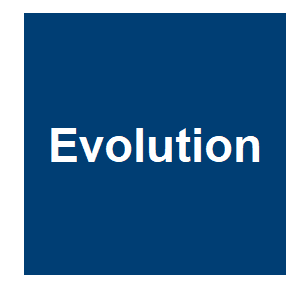
|
Centromere-associated meiotic drive and female fitness variation in MimulusFishman, LK, J. K., Evolution, 69:1208-1218. 2015.
Female meiotic drive, in which chromosomal variants preferentially segregate to the egg pole during asymmetric female meiosis, is a theoretically pervasive but still mysterious form of selfish evolution. Like other selfish genetic elements, driving chromosomes may be maintained ... Keywords: animals, conservation, gene drive ecology, gene drive news, gene drive synthetic, mammals, squirrel |

|
Origin, evolution, and population genetics of the selfish Segregation Distorter gene duplication in European and African populations of Drosophila melanogasterBrand, CLL, A. M.; Presgraves, D. C., Evolution, 69:1271-1283. 2015.
Meiotic drive elements are a special class of evolutionarily selfish genes that subvert Mendelian segregation to gain preferential transmission at the expense of homologous loci. Many drive elements appear to be maintained in populations as stable polymorphisms, their equilibrium ... Keywords: animals, conservation, gene drive ecology, gene drive news, gene drive synthetic, mammals, squirrel |

|
Detrimental effects of an autosomal selfish genetic element on sperm competitiveness in house miceSutter, AL, A. K., Proceedings of the Royal Society B-Biological Sciences, 282:1-8. 2015.
Female multiple mating (polyandry) is widespread across many animal taxa and indirect genetic benefits are a major evolutionary force favouring polyandry. An incentive for polyandry arises when multiple mating leads to sperm competition that disadvantages sperm from genetically ... Keywords: animals, conservation, gene drive ecology, gene drive news, gene drive synthetic, mammals, squirrel |

|
Analysis of segregation distortion and its relationship to hybrid barriers in riceReflinur, K, B.; Jang, S. M.; Chu, S. H.; Bordiya, Y.; Akter, M. B.; Lee, J.; Chin, J. H.; Koh, H. J., Rice, 7:3. 2014.
Segregation distortion (SD) is a frequently observed occurrence in mapping populations generated from crosses involving divergent genotypes. In the present study, ten genetic linkage maps constructed from reciprocal F-2 and BC1F1 mapping populations derived from the parents ... Keywords: animals, conservation, gene drive ecology, gene drive news, gene drive synthetic, mammals, squirrel |

|
The dynamic relationship between polyandry and selfish genetic elementsWedell, N, Philosophical Transactions of the Royal Society B-Biological Sciences, 368:10. 2013.
Selfish genetic elements (SGEs) are ubiquitous in eukaryotes and bacteria, and make up a large part of the genome. They frequently target sperm to increase their transmission success, but these manipulations are often associated with reduced male fertility. Low fertility of ... Keywords: animals, conservation, gene drive ecology, gene drive news, gene drive synthetic, mammals, squirrel |

|
Spread of a new parasitic B chromosome variant is facilitated by high gene flowManrique-Poyato, MIL-L, M. D.; Cabrero, J.; Perfectti, F.; Camacho, J. P. M., PLOS One, 8:e83712. 2013.
The B-24 chromosome variant emerged several decades ago in a Spanish population of the grasshopper Eyprepocnemis plorans and is currently reaching adjacent populations. Here we report, for the first time, how a parasitic B chromosome (a strictly vertically transmitted parasite) ... Keywords: animals, conservation, gene drive ecology, gene drive news, gene drive synthetic, mammals, squirrel |

|
Local dynamics of a fast-evolving sex-ratio system in Drosophila simulansBastide, HG, P. R.; Ogereau, D.; Cazemajor, M.; Montchamp-Moreau, C., Molecular Ecology, 22:5352-5367. 2013.
By distorting Mendelian transmission to their own advantage, X-linked meiotic drive elements can rapidly spread in natural populations, generating a sex-ratio bias. One expected consequence is the triggering of a co-evolutionary arms race between the sex chromosome that carries ... Keywords: animals, conservation, gene drive ecology, gene drive news, gene drive synthetic, mammals, squirrel |

|
General principles of single-construct chromosomal gene driveMarshall, JMH, B. A., Evolution, 66:2150-2166. 2012.
Gene drive systems are genetic elements capable of spreading into a population even if they confer a fitness cost to their host. We consider a class of drive systems consisting of a chromosomally located, linked cluster of genes, the presence of which renders specific classes of ... Keywords: animals, conservation, gene drive ecology, gene drive news, gene drive synthetic, mammals, squirrel |

|
Complex genetic nature of sex-independent transmission ratio distortion in Asian rice species: the involvement of unlinked modifiers and sex-specific mechanismsKoide, YS, Y.; Ikenaga, M.; Sawamura, N.; Matsubara, K.; Onishi, K.; Kanazawa, A.; Sano, Y., Heredity, 108:242-247. 2012.
Transmission ratio distortion (TRD), in which one allele is transmitted more frequently than the opposite allele, is presumed to act as a driving force in the emergence of a reproductive barrier. TRD acting in a sex-specific manner has been frequently observed in interspecific ... Keywords: animals, conservation, gene drive ecology, gene drive news, gene drive synthetic, mammals, squirrel |
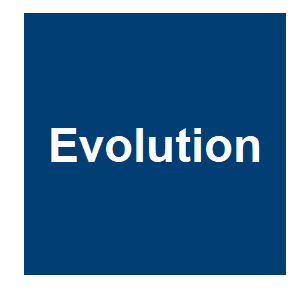
|
Local selection underlies the geographic distribution of sex-ratio drive in Drosophila neotestaceaDyer, KA, Evolution, 66:973-984. 2012.
Selfish genetic elements promote their own transmission to the next generation, often at a cost to the host individual. A sex-ratio (SR) driving X chromosome prevents the maturation of Y-bearing sperm, and as a result is transmitted to 100% of the offspring, all of which are ... Keywords: animals, conservation, gene drive ecology, gene drive news, gene drive synthetic, mammals, squirrel |

|
Rapid rise and fall of selfish sex-ratio X Chromosomes in Drosophila simulans: Spatiotemporal analysis of phenotypic and molecular dataBastide, HC, M.; Ogereau, D.; Derome, N.; Hospital, F.; Montchamp-Moreau, C., Molecular Biology and Evolution, 28:2461-2470. 2011.
Sex-ratio drive, which has been documented in several Drosophila species, is induced by X-linked segregation distorters. Contrary to Mendel's law of independent assortment, the sex-ratio chromosome (X(SR)) is inherited by more than half the offspring of carrier males, resulting ... Keywords: animals, conservation, gene drive ecology, gene drive news, gene drive synthetic, mammals, squirrel |

|
Selective microspore abortion correlated with aneuploidy: an indication of meiotic driveFurness, CAR, P. J., Sexual Plant Reproduction, 24:1-8. 2011.
Selective megaspore abortion (monomegaspory) probably arose once in seed plants and occurs routinely in more than 70% of angiosperm species, representing one of the key characters of a heterosporous life history. In contrast, selective microspore abortion leading to pollen ... Keywords: animals, conservation, gene drive ecology, gene drive news, gene drive synthetic, mammals, squirrel |
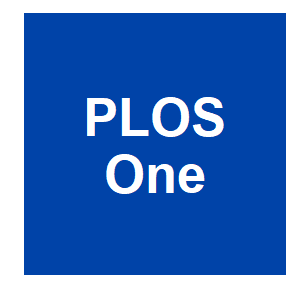
|
Multi-Locus Assortment (MLA) for transgene dispersal and elimination in mosquito populationsRasgon, JL, PLOS One, 4:e5833. 2009.
: Replacement of wild-type mosquito populations with genetically modified versions is being explored as a potential strategy to control vector-borne diseases. Due to lower expected relative fitness of transgenic individuals, transgenes must be driven into populations for these ... Keywords: animals, conservation, gene drive ecology, gene drive news, gene drive synthetic, mammals, squirrel |

|
Large-scale selective sweep among Segregation Distorter chromosomes in African populations Drosophila melanogasterPresgraves, DCG, P. R.; Cherukuri, A.; Lyttle, T. W., PLOS Genetics, 5:e1000463. 2009.
Segregation Distorter (SD) is a selfish, coadapted gene complex on chromosome 2 of Drosophila melanogaster that strongly distorts Mendelian transmission; heterozygous SD/SD(+) males sire almost exclusively SD-bearing progeny. Fifty years of genetic, molecular, and theory work ... Keywords: animals, conservation, gene drive ecology, gene drive news, gene drive synthetic, mammals, squirrel |

|
The evolution of sex-independent transmission ratio distortion involving multiple allelic interactions at a single locus in riceKoide, YI, M.; Sawamura, N.; Nishimoto, D.; Matsubara, K.; Onishi, K.; Kanazawa, A.; Sano, Y., Genetics, 180:409-420. 2008.
Transmission ratio distortion (TRD) is frequently observed in inter-and intraspecific hybrids of plants, leading to a violation of Mendelian inheritance. Sex-independent TRD (siTRD) was detected in a hybrid between Asian cultivated rice and its wild ancestor. Here we examined how ... Keywords: animals, conservation, gene drive ecology, gene drive news, gene drive synthetic, mammals, squirrel |
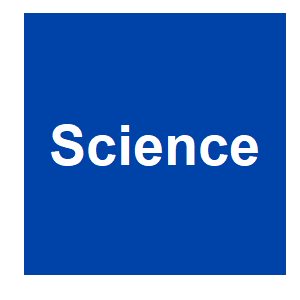
|
Centromere-associated female meiotic drive entails male fitness costs in MonkeyflowersFishman, LS, A., Science, 322:1559-1562. 2008.
Female meiotic drive, in which paired chromosomes compete for access to the egg, is a potentially powerful but rarely documented evolutionary force. In interspecific monkeyflower ( Mimulus) hybrids, a driving M. guttatus allele ( D) exhibits a 98: 2 transmission advantage via ... Keywords: animals, conservation, gene drive ecology, gene drive news, gene drive synthetic, mammals, squirrel |

|
Meiotic drive and sex determination: molecular and cytological mechanisms of sex ratio adjustment in birdsRutkowska, JB, A. V., Philosophical Transactions of the Royal Society B-Biological Sciences, 363:1675-1686. 2008.
Differences in relative fitness of male and female offspring across ecological and social environments should favour the evolution of sex-determining mechanisms that enable adjustment of brood sex ratio to the context of breeding. Despite the expectation that genetic sex ... Keywords: animals, conservation, gene drive ecology, gene drive news, gene drive synthetic, mammals, squirrel |
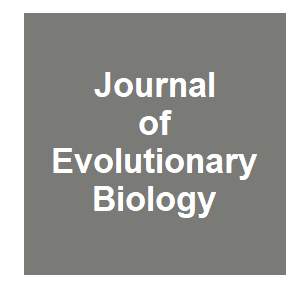
|
Viability effects and not meoitic drive cause dramatic departures from Mendelian inheritance for malic enzyme in hybrids of Tigriopus californicus populationsWillett, CSB, J. N., Journal of Evolutionary Biology, 20:1196-1205. 2007.
The genetic basis of post-zygotic reproductive isolation is beginning to be untangled in closely related species, but less is known about the genetics of reproductive isolation between divergent populations. Here, two genes encoding malic enzyme (ME) are isolated from the copepod ... Keywords: animals, conservation, gene drive ecology, gene drive news, gene drive synthetic, mammals, squirrel |
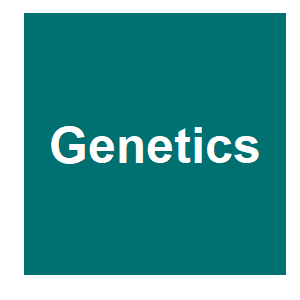
|
Neurospora spore killers Sk-2 and Sk-3 suppress meiotic silencing by unpaired DNARaju, NBM, R. L.; Shiu, P. T., Genetics, 176:43-52. 2007.
In Neurosphora, crassa., pairing of homologous DNA segments is monitored during meiotic prophase I. Any genes not paired with a homolog, as well as any paired homologs of that gene, are silenced during the sexual phase by a mechanism known as meiotic silencing by unpaired DNA ... Keywords: animals, conservation, gene drive ecology, gene drive news, gene drive synthetic, mammals, squirrel |
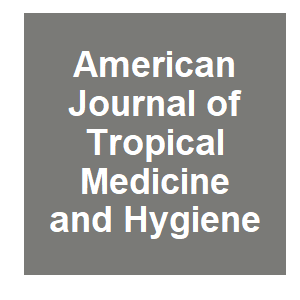
|
Cage trials using an endogenous meiotic drive gene in the mosquito Aedes aegypti to promote population replacementCha, SJM, A.; Chadee, D. D.; Severson, D. W., American Journal of Tropical Medicine and Hygiene, 74:62-68. 2006.
Control of arthropod-borne diseases based on population replacement with genetically modified noncompetent vectors has been proposed as a promising alternative to conventional control strategies. Due to likely fitness costs associated with vectors manipulated to carry ... Keywords: animals, conservation, gene drive ecology, gene drive news, gene drive synthetic, mammals, squirrel |
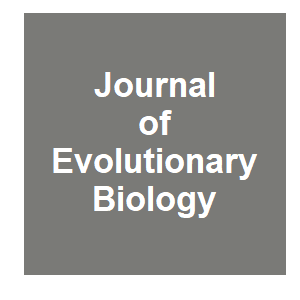
|
Fitness effects of X chromosome drive in the stalk-eyed fly, Cyrtodiopsis dalmanniWilkinson, GSJ, P. M.; Kelleher, E. S.; Muscedere, M. L.; Lorsong, A., Journal of Evolutionary Biology, 19:1851-1860. 2006.
Sex-ratio (SR) males produce predominantly female progeny because most Y chromosome sperm are rendered nonfunctional. The resulting transmission advantage of X-SR chromosomes should eventually cause population extinction unless segregation distortion is masked by suppressors or ... Keywords: animals, conservation, gene drive ecology, gene drive news, gene drive synthetic, mammals, squirrel |

|
Segregation distortion in hybrids between the Bogota and USA subspecies of Drosophila pseudoobscuraOrr, HAI, S., Genetics, 169:671-682. 2005.
We show that, contrary to claims in the literature, "sterile" males resulting from the cross of the Bogota and USA subspecies of Drosophila pseudoobscura are weakly fertile. Surprisingly, these hybrid males produce almost all daughters when crossed to females of any genotype ... Keywords: animals, conservation, gene drive ecology, gene drive news, gene drive synthetic, mammals, squirrel |

|
Meiotic drive at the Om locus in wild-derived inbred mouse strainsKim, KT, S.; Howard, I. B.; Bell, T. A.; Doherty, H. E.; Ideraabdullah, F.; Detwiler, D. A.; De Villena, F. P. M., Biological Journal of the Linnean Society, 84:487-492. 2005.
Meiotic drive is an evolutionary force in which natural selection is uncoupled from organismal fitness. Recently, it has been proposed that meiotic drive and genetic drift represent major forces in the evolution of the mammalian karyotype. Meiotic drive involves two types of ... Keywords: animals, conservation, gene drive ecology, gene drive news, gene drive synthetic, mammals, squirrel |
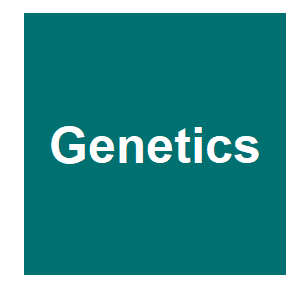
|
A novel meiotic drive locus almost completely distorts segregation in Mimulus (monkeyflower) hybridsFishman, LW, J. H., Genetics, 169:347-353. 2005.
We report the discovery, mapping, and characterization of a meiotic drive locus (D) exhibiting nearly 100% nonrandom transmission in hybrids between two species of yellow monkeyflowers, outcrossing Mimulus guttatus and selfing M. nasutus. Only 1% of F-2 hybrids were M. nasutus ... Keywords: animals, conservation, gene drive ecology, gene drive news, gene drive synthetic, mammals, squirrel |

|
The distribution of B chromosomes across speciesPalestis, BGT, R.; Burt, A.; Jones, R. N., Cytogenetic and Genome Research, 106:151-158. 2004.
In this review we look at the broad picture of how B chromosomes are distributed across a wide range of species. We review recent studies of the factors associated with the presence of Bs across species, and provide new analyses with updated data and additional variables. The ... Keywords: animals, conservation, gene drive ecology, gene drive news, gene drive synthetic, mammals, squirrel |
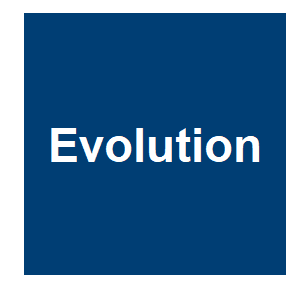
|
Sperm survival in female stalk-eyed flies depends on seminal fluid and meiotic driveFry, CLW, G. S., Evolution, 58:1622-1626. 2004.
Sperm competition is common in many insect species; however, the mechanisms underlying differences in sperm precedence are not well understood. In the stalk-eyed fly, Cyrtodiopsis whitei (Diptera, Diopsidae), sperm precedence is influenced by the presence of sex chromosome ... Keywords: animals, conservation, gene drive ecology, gene drive news, gene drive synthetic, mammals, squirrel |

|
Homing endonuclease genes: the rise and fall and rise again of a selfish elementBurt, AK, V., Current Opinion in Genetics & Development, 14:609-615. 2004.
Homing endonuclease genes (HEGs) are selfish genetic elements that spread by first cleaving chromosomes that do not contain them and then getting copied across to the broken chromosome as a byproduct of the repair process. The success of this strategy will depend on the ... Keywords: animals, conservation, gene drive ecology, gene drive news, gene drive synthetic, mammals, squirrel |
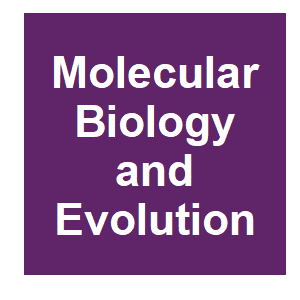
|
Adaptation for horizontal transfer in a homing endonucleaseKoufopanou, VG, M. R.; Burt, A., Molecular Biology and Evolution, 19:239-246. 2002.
Selfish genes of no function other than self-propagation are susceptible to degeneration if they become fixed in a population. and regular transfer to new species may be the only means for their long-term persistence. To test this idea we surveyed 24 species of yeast for VDE, a ... Keywords: animals, conservation, gene drive ecology, gene drive news, gene drive synthetic, mammals, squirrel |

|
Does Stellate cause meiotic drive in Drosophila melanogaster?Belloni, MT, P.; Bozzetti, M. P.; Palumbo, G.; Robbins, L. G., Genetics, 161:1551-1559. 2002.
Drosophila melanogaster males deficient for the crystal (cry) locus of the Y chromosome that carry between 15 and 60 copies of the X-linked Stellate (Ste) gene are semisterile, have elevated levels of nondisjunction, produce distorted sperm genotype ratios (meiotic drive), and ... Keywords: animals, conservation, gene drive ecology, gene drive news, gene drive synthetic, mammals, squirrel |

|
Meiotic drive alters sperm competitive ability in stalk-eyed fliesWilkinson, GSF, C. L., Proceedings of the Royal Society B-Biological Sciences, 268:2559-2564. 2001.
Meiotic drive results when sperm carrying a driving chromosome preferentially survive development. Meiotic drive should therefore influence sperm competition because drive males produce fewer sperm than non-drive males. Whether meiotic drive also influences the competitive ... Keywords: animals, conservation, gene drive ecology, gene drive news, gene drive synthetic, mammals, squirrel |
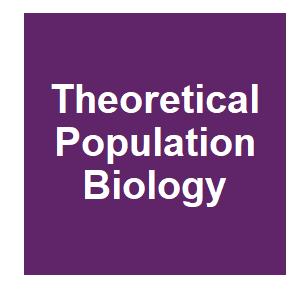
|
Selection and segregation distortion in a sex-differentiated populationWeissing, FJvB, M., Theoretical Population Biology, 60:327-341. 2001.
We extend the classical model for selection at an autosomal locus in a sex-differentiated population to include segregation distortion. The equations remain the same, but the fitness parameters are interpreted differently and refer to alleles instead of genotypes. We derive ... Keywords: animals, conservation, gene drive ecology, gene drive news, gene drive synthetic, mammals, squirrel |
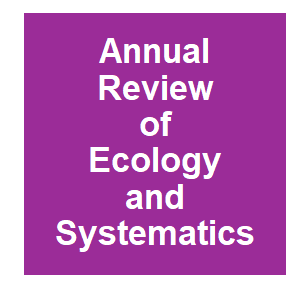
|
Sex chromosome meiotic driveJaenike, J, Annual Review of Ecology and Systematics, 32:25-49. 2001.
Sex chromosome drive refers to the unequal transmission of X and Y chromosomes from individuals of the heterogametic sex, resulting in biased sex ratios among progeny and within populations, The presence of driving sex chromosomes can reduce mean fitness within a population, ... Keywords: animals, conservation, gene drive ecology, gene drive news, gene drive synthetic, mammals, squirrel |

|
Outcrossed sex allows a selfish gene to invade yeast populationsGoddard, MRG, D.; Burt, A., Proceedings of the Royal Society B-Biological Sciences, 268:2537-2542. 2001.
Homing endonuclease genes (HEGs) in eukaryotes are optional genes that have no obvious effect on host phenotype except for causing chromosomes not containing a cop), of the gene to be cut, thus causing them to be inherited at a greater than Mendelian rate via gene conversion. ... Keywords: animals, conservation, gene drive ecology, gene drive news, gene drive synthetic, mammals, squirrel |

|
A male-biased primary sex ratio and larval mortality in Eucheira socialis (Lepidoptera : Pieridae)Underwood, DLAS, A. M., Evolutionary Ecology Research, 1:703-717. 1999.
We investigated the sex ratio and sex-biased mortality in the Mexican pierid butterfly, Eucheira socialis westwoodi. We studied two populations between 1990 and 1997 along Mexico Highway 40, which runs from Mazatlan, Sinaloa to Durango, Durango, Populations occurring between km ... Keywords: animals, conservation, gene drive ecology, gene drive news, gene drive synthetic, mammals, squirrel |
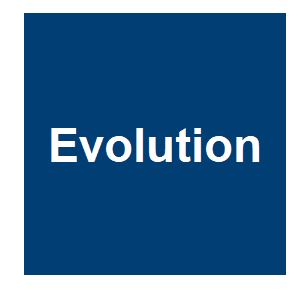
|
Evolution of driving X chromosomes and resistance factors in experimental populations of Drosophila simulansCapillon, CA, A., Evolution, 53:506-517. 1999.
Sex-ratio drive is a particular case of meiotic drive, described in several Drosophila species, that causes males bearing driving X chromosome to produce a large excess of females in their progeny. In Drosophila simulans, driving X chromosomes and resistance factors located on ... Keywords: animals, conservation, gene drive ecology, gene drive news, gene drive synthetic, mammals, squirrel |
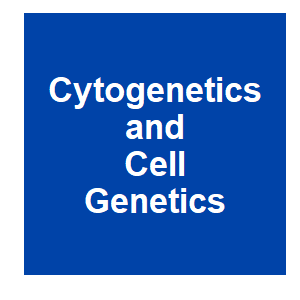
|
Meiotic drive favors Robertsonian metacentric chromosomes in the common shrew (Sorex araneus, Insectivora, Mammalia)Wyttenbach, AB, P.; Hausser, J., Cytogenetics and Cell Genetics, 83:199-206. 1998.
Meiotic drive has attracted much interest because it concerns the robustness of Mendelian segregation and its genetic and evolutionary stability. We studied chromosomal meiotic drive in the common shrew (Sorex araneus, Insectivora, Mammalia), which exhibits one of the most ... Keywords: animals, conservation, gene drive ecology, gene drive news, gene drive synthetic, mammals, squirrel |

|
Male eye span in stalk-eyed flies indicates genetic quality by meiotic drive suppressionWilkinson, GSP, D. C.; Crymes, L., Nature, 391:276-279. 1998.
In some species, females choose mates possessing ornaments that predict offspring survival(1-5). However, sexual selection by female preference for male genetic quality(6-8) remains controversial because conventional genetic mechanisms maintain insufficient variation in male ... Keywords: animals, conservation, gene drive ecology, gene drive news, gene drive synthetic, mammals, squirrel |

|
Selected lines of Aedes aegypti with persistently distorted sex ratiosOwusuDaaku, KOW, R. J.; Butler, R. D., Heredity, 79:388-393. 1997.
A breeding scheme to isolate X chromosomes sensitive to drive by the T8 (Trinidad) Y chromosome of Aedes aegypti (the MD haplotype) is reported. Crosses with an Australian strain Th.I (Thursday Island) revealed not only sensitive and resistant X chromosomes but also some with the ... Keywords: animals, conservation, gene drive ecology, gene drive news, gene drive synthetic, mammals, squirrel |

|
Meiotic drive in fungi: Chromosomal elements that cause fratricide and distort genetic ratiosRaju, NB, Journal of Genetics, 75:287-296. 1996.
Fungal Spore killers (Sk), studied most extensively in Neurospora and to a lesser extent in Podospora, Gibberella and Cochliobolus, cause the death of ascospores (= meiospores) that do not contain the killer (Sk(K)) element. When a Spore killer is heterozygous (Sk(K) x Sk(S)) in ... Keywords: animals, conservation, gene drive ecology, gene drive news, gene drive synthetic, mammals, squirrel |
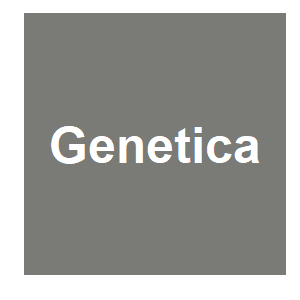
|
The effect of B chromosomes on mating success of the grasshopper Eyprepocnemis ploransMartin, SA, P.; HenriquesGil, N., Genetica, 97:197-203. 1996.
The mating ability of E. plorans was tested in laboratory conditions in six experimental units composed of ten males and fifteen females during 31 days. When significant differences were found (three from the six cages, and in totals) they involved a decrease of matings involving ... Keywords: animals, conservation, gene drive ecology, gene drive news, gene drive synthetic, mammals, squirrel |

|
The paternal-sex-ratio chromosome of NasoniaWerren, JH, American Naturalist, 137:392-402. 1991.
Paternal sex ratio (PSR) is a supernumerary chromosome that is transmitted through sperm to fertilized eggs and then gains a transmission advantage by causing supercondensation of the paternal chromosomes (except itself). Because of haplodiploidy, this converts diploid females ... Keywords: animals, conservation, gene drive ecology, gene drive news, gene drive synthetic, mammals, squirrel |

|
Sex ratio polymorphism in Drosophila pseudoobscuraBeckenbach, AT, American Naturalist, 137:340-343. 1991.
I studied "sex-ratio" (SR) genotype frequencies in two populations of Drosophila pseudoobscura from southeastern Arizona: Bear Creek Canyon and Tucson. Wild-inseminated females were collected, their fecundities measured in the laboratory, and their SR genotypes inferred by ... Keywords: animals, conservation, gene drive ecology, gene drive news, gene drive synthetic, mammals, squirrel |

|
Expression of meiotic drive elements Spore Killer-2 and Spore Killer-3 in asci of Neurospora tetraspermaRaju, NBP, D. D., Genetics, 129:25-37. 1991.
It was shown previously that when a chromosomal Spore killer factor is heterozygous in Neurospora species with eight-spored asci, the four sensitive ascospores in each ascus die and the four survivors are all killers. Sk-2K and Sk-3K are nonrecombining haplotypes that segregate ... Keywords: animals, conservation, gene drive ecology, gene drive news, gene drive synthetic, mammals, squirrel |
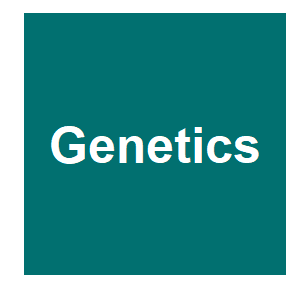
|
Sex-ratio meiotic drive in Drosophila testaceaJames, ACJ, J., Genetics, 126:651-656. 1990.
We document the occurrence of "sex ratio" meiotic drive in natural populations of Drosophila testacea. "Sex ratio" males sire greater than 95% female offspring. Genetic analysis reveals that this effect is due to a meiotically driven X chromosome, as in other species of ... Keywords: animals, conservation, gene drive ecology, gene drive news, gene drive synthetic, mammals, squirrel |

|
Genetics-driving genes and chromosomesCharlesworth, B, Nature, 332:394-395. 1988.
Thereare several genetic and chromosomal systems in which Mendel's first law - the equal probability of transmission of maternal and paternal alternative alleles or homologues - is violated. This phenomenon was named 'meiotic drive' in 1957 by Sandler and Novitski, who drew ... Keywords: animals, conservation, gene drive ecology, gene drive news, gene drive synthetic, mammals, squirrel |

|
Polymorphism in the rates of meiotic drive acting on the B-chromosome of Myrmeleotettix maculatusShaw, MWH, G. M.; Anderson, D. A., Heredity, 55:61-68. 1985.
A survey of all the available data on meiotic transmission rates in M. maculatus suggests that a polymorphism in female transmission rate exists in most natural populations. Differences in the frequency of the types or in the transmission rates they manifest may exist between ... Keywords: animals, conservation, gene drive ecology, gene drive news, gene drive synthetic, mammals, squirrel |

|
Transporting marker gene re (red eye) into a laboratory cage population of Aedes aegypti (Diptera Culicidae), using meiotic drive at MD locusWood, RJC, L. M.; Hamilton, A.; Whitelaw, A., Journal of Medical Entomology, 14:461-464. 1978.
An attempt has.been made to use the meiotic drive gene MD to transport a marker re (red eye) into a laboaratory population of the mosquito Aedes aegypti. The experiment produced an increase in re frequency, but also indicated that this gene has unexpectedly high fitness in the ... Keywords: animals, conservation, gene drive ecology, gene drive news, gene drive synthetic, mammals, squirrel |
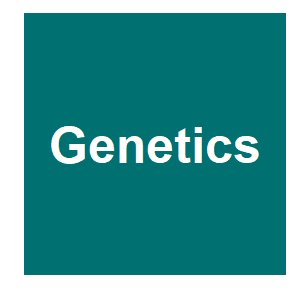
|
Experimental population-genetics of meiotic drive systems .1: Pseudo-Y chromosomal drive as a means of eliminating cage populations of Drosophila melanogasterLyttle, TW, Genetics, 86:413-445. 1977.
The experimental population genetics of Y-chromosome drive in Drosophila; melanogasier is approximated by studying the behavior of T(Y;S),SD lines.; These exhibit “pseudo-Y” drive through the effective coupling of the Y chromosome; to the second chromosome meiotic drive ... Keywords: animals, conservation, gene drive ecology, gene drive news, gene drive synthetic, mammals, squirrel |
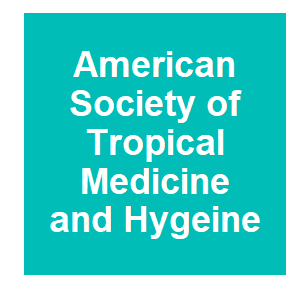
|
Field trial of competitive displacement of Aedes-polynesiensis by Aedes-albopictus on a Pacific atollL. Rosen, L. E. Rozeboom, W. C. Reeves, J. Saugrain and D. J. Gubler, American Journal of Tropical Medicine and Hygiene, 25:906-913. 1976.
Prior laboratory studies and field observations suggested that it might be possible to reduce the size of the population of, or eliminate, Aedes polynesiensis by the introduction of Aedes albopictus. The former mosquito is the principal vector of nonperiodic filariasis caused by ... Keywords: animals, conservation, gene drive ecology, gene drive news, gene drive synthetic, mammals, squirrel |
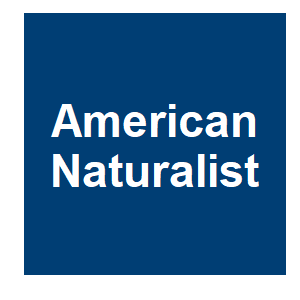
|
Sex-ration, meiotic drive, and group selectin in Drosophila pseudoobscuraPolicansky, D, American Naturalist, 108:75-90. 1974.
Sex ratio (SR) is a widespread genetic condition of the X-chromosome in Drosophila species which causes males to produce progenies consisting almost entirely of females. Results of samples from natural populations of Drosophila pseudoobscura and results of some laboratory ... Keywords: animals, conservation, gene drive ecology, gene drive news, gene drive synthetic, mammals, squirrel |

|
Analysis of irradiated Drosophila populations for meiotic driveNovitski, EH, G. D., Nature, 190:989-990. 1961.
The existence of chromosomes or alleles that are represented in the gametes of a heterozygote with a frequency greater than the expected 50 percent is now well established for a variety of species. The immediate population result of introducing such a chromosome or allele must ... Keywords: animals, conservation, gene drive ecology, gene drive news, gene drive synthetic, mammals, squirrel |
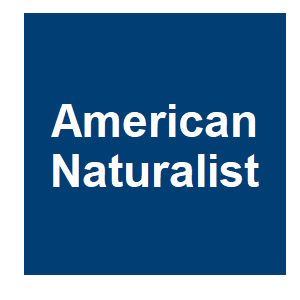
|
Meiotic drive in natural populations of Drosophila melanogaster .6: A preliminary report on presence of segregation-distortion in a Baja california populationMange, EJ, American Naturalist, 95:87-96. 1961.
Meiotic drive is a term coined by Sandler and Novitski (1957) to describe; the situation whereby a heterozygote produces gametes containing an excess; of one allele, rather than the expected equality. As a consequence of such; aberrant segregations, gene frequencies within a ... Keywords: animals, conservation, gene drive ecology, gene drive news, gene drive synthetic, mammals, squirrel |

|
Time of temperature sensitivity of meiotic drive in Drosophila melanogasterErickson, JH, G. D., American Naturalist, 95:247-250. 1961.
In a line of Drosophila melanogaster demonstrating meiotic drive, it was found that the high recovery rate of the X-chromosome could be nearly nullified by temperature treatment. A series of experiments were carried out to determine at what stage of the life-cycle this treatment ... Keywords: animals, conservation, gene drive ecology, gene drive news, gene drive synthetic, mammals, squirrel |

Contact
David O’Brochta
Foundation for the
National Institutes of Health
geneconvenevi@fnih.org
RSS

